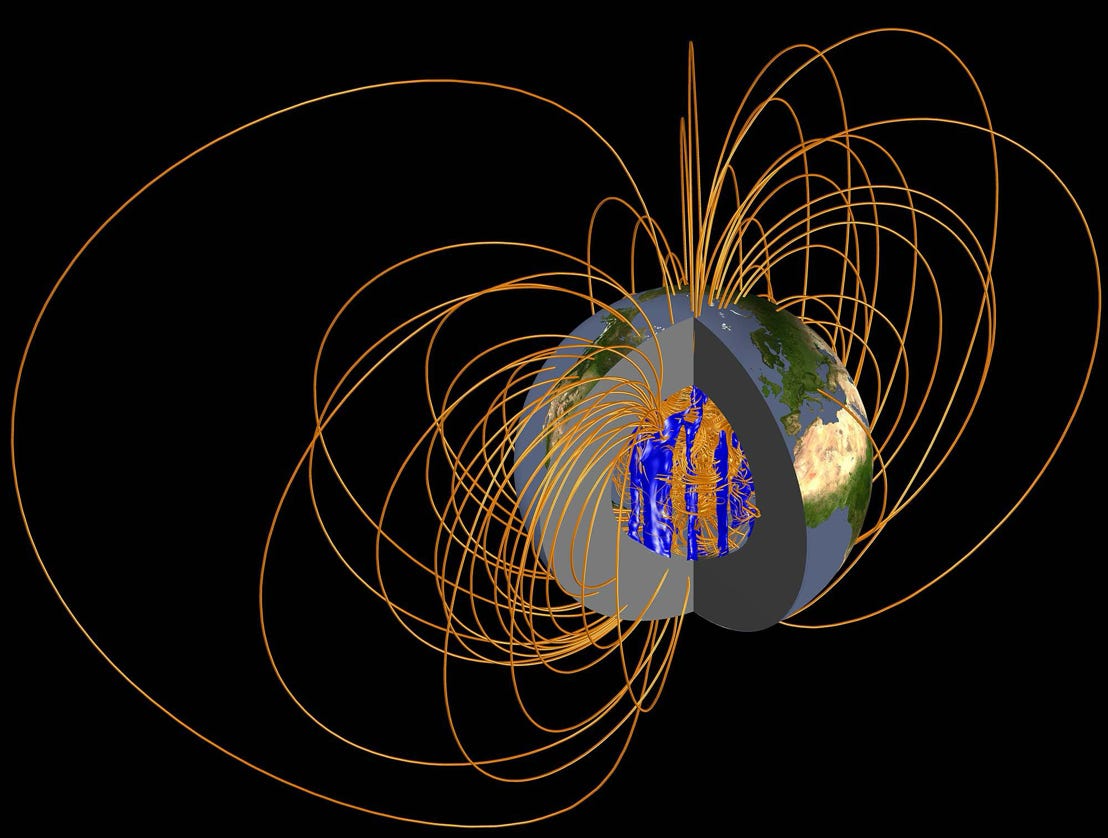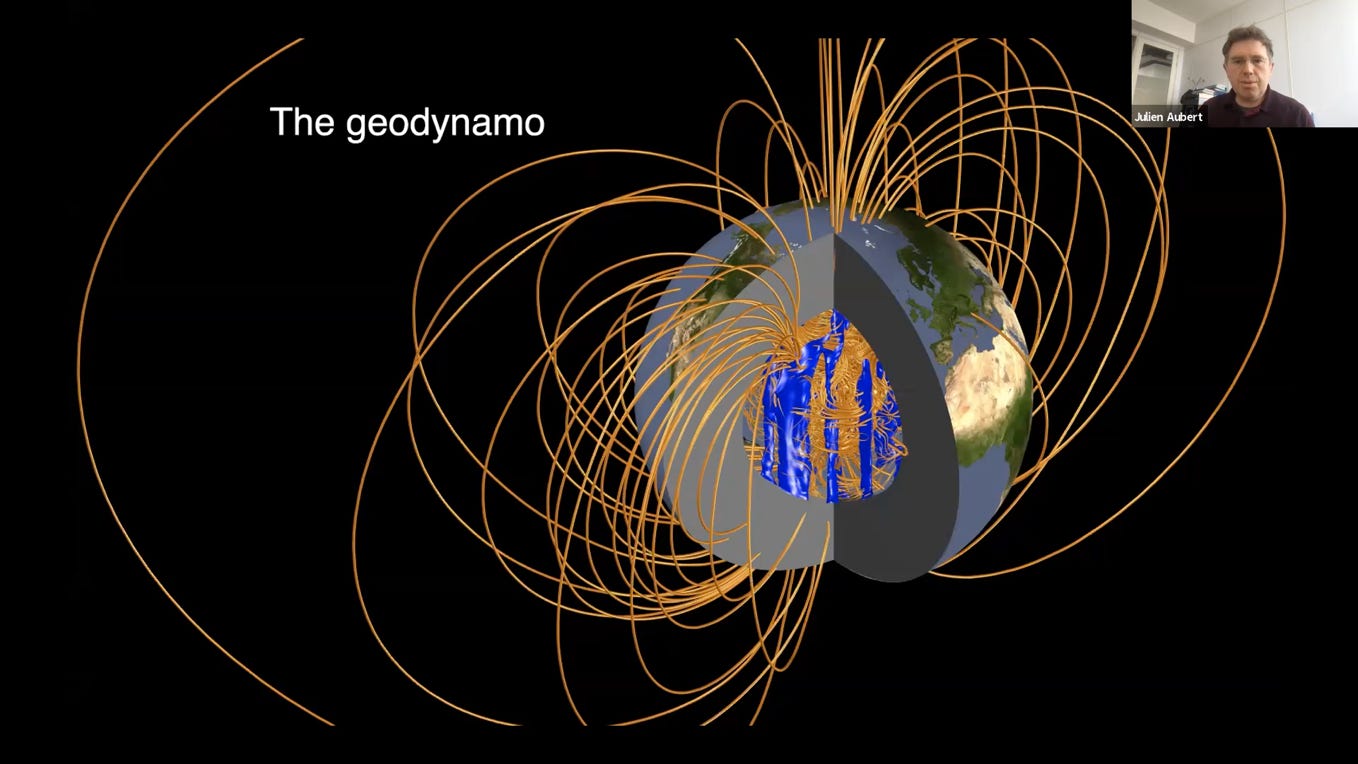23/03/2022
Together with our colleagues at IsTerre and the Royal Observatory of Belgium, Nicolas Gillet has performed a reanalysis of satellite magnetic data over the past twenty years to reveal subtle fluctuations in Earth’s magnetic field that are caused by a previously overlooked category of magnetohydrodynamic waves, the rapid ‘Quasi-Geostrophic Magneto-Coriolis (QGMC) waves’. Such waves had been previously theoretically described but were thought to arise with long periods in Earth’s core. The study of Nicolas, published in PNAS, shows that these are present at interannual (about 7 years) periods. These waves, which we have worked upon from various (theoretical, numerical, observational) standpoints within the 4DEarth ESA project open the way to a better magnetic sounding of the core interior.
Gillet, N., Gerick, F., Jault, D., Schwaiger, T., Aubert, J., Istas, M.: Satellite magnetic data reveal interannual waves in Earth’s core, PNAS 119, e2115258119, 2022, doi: 10.1073/pnas.2115258119

